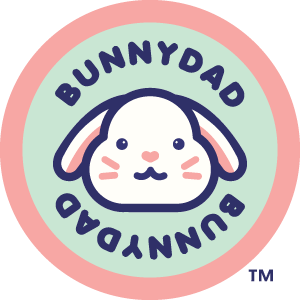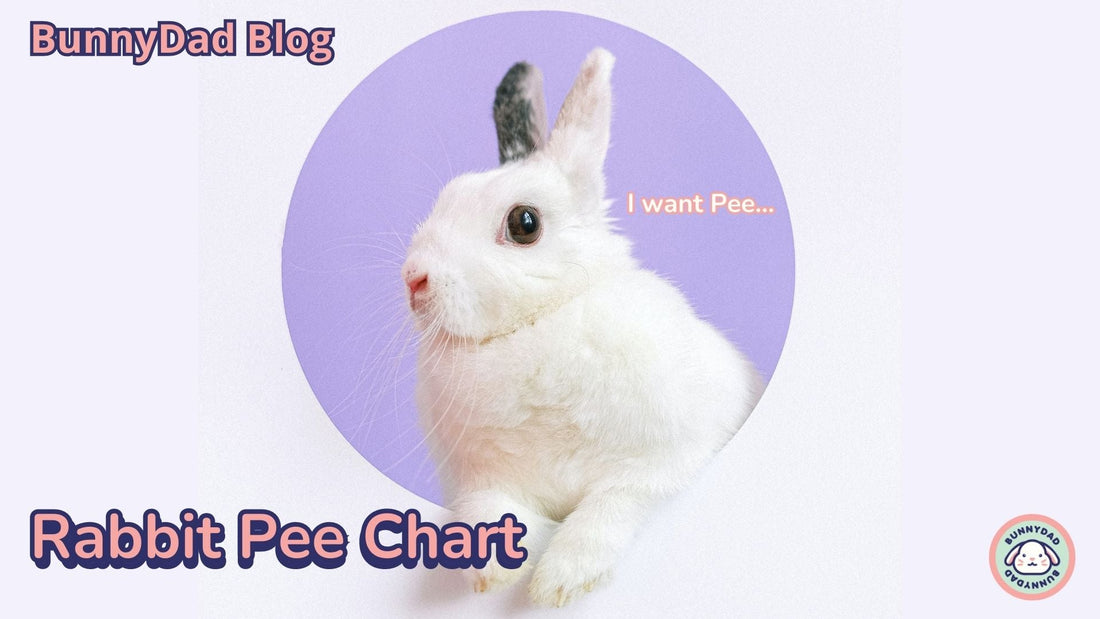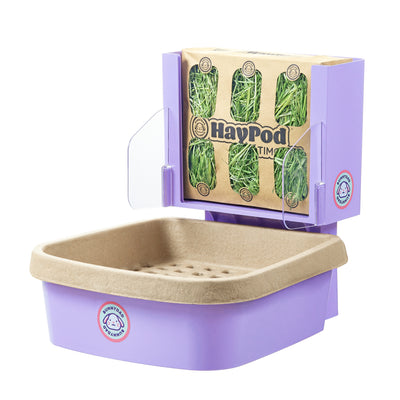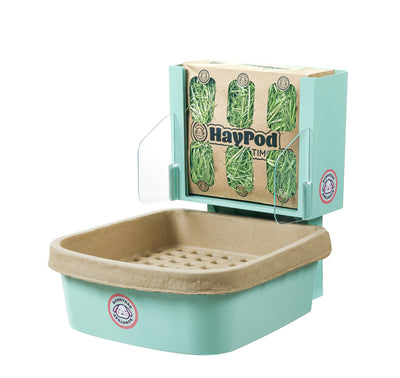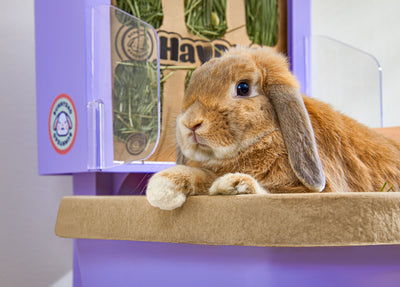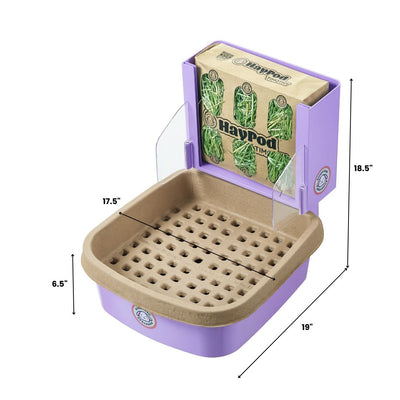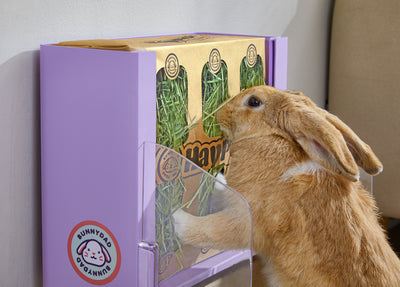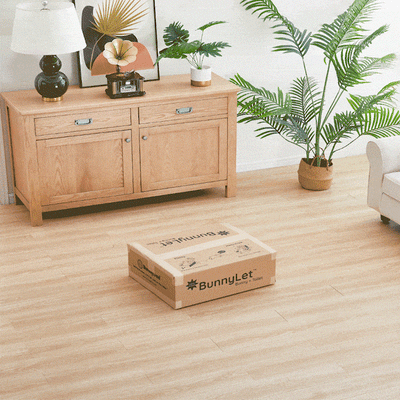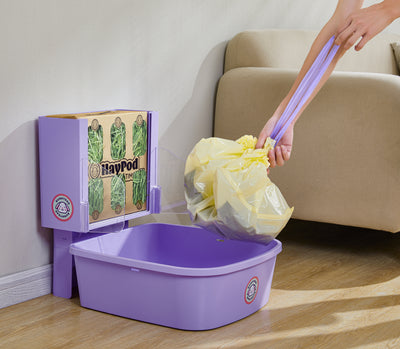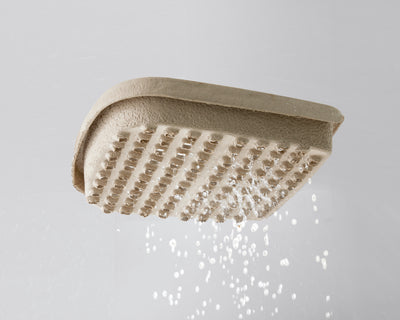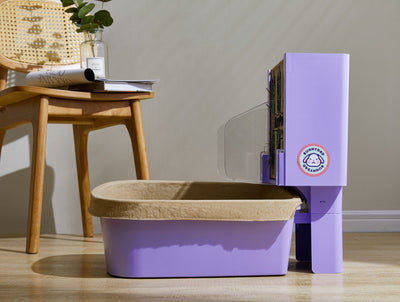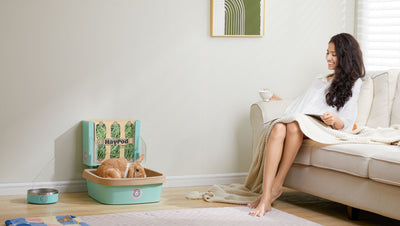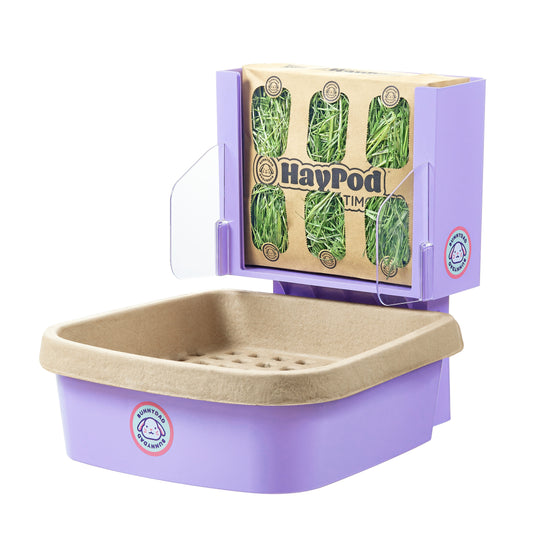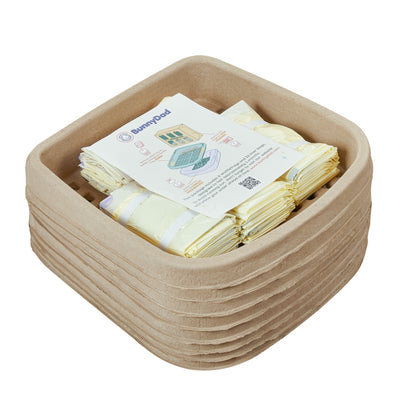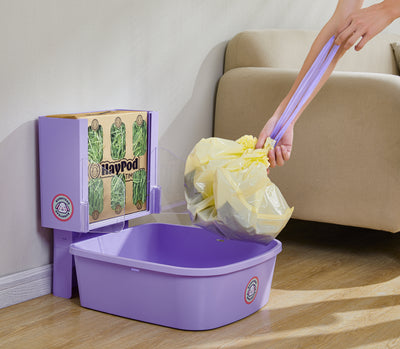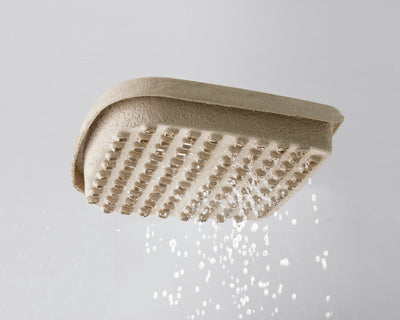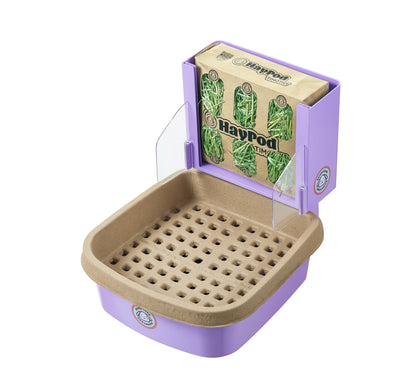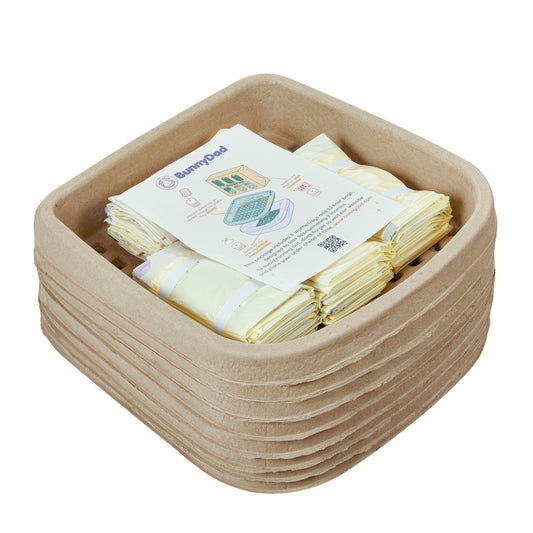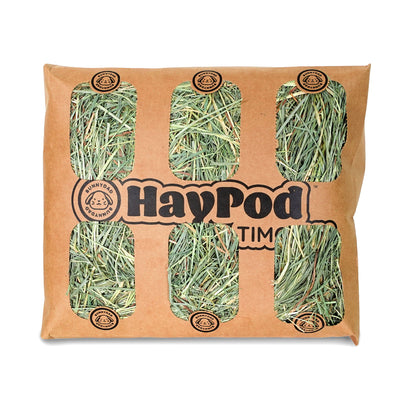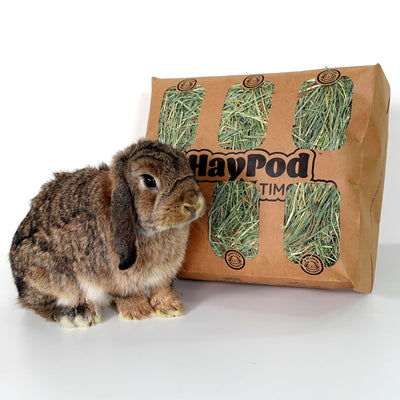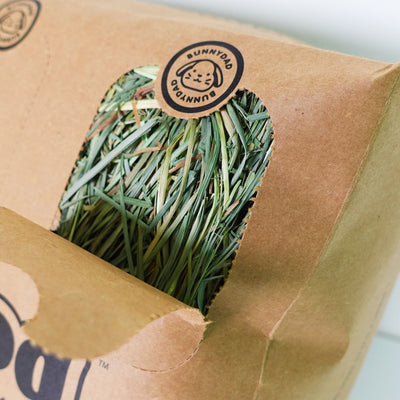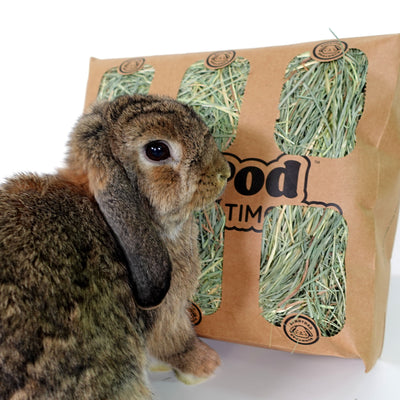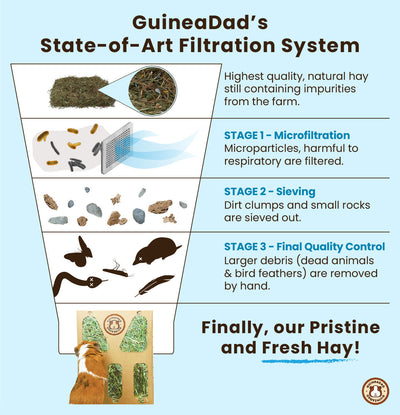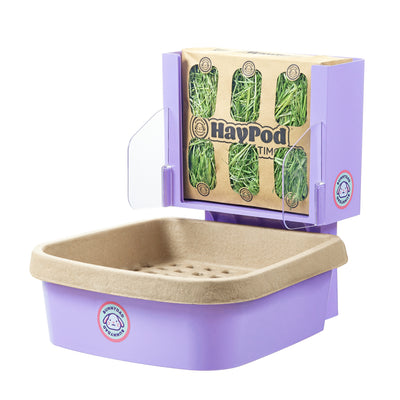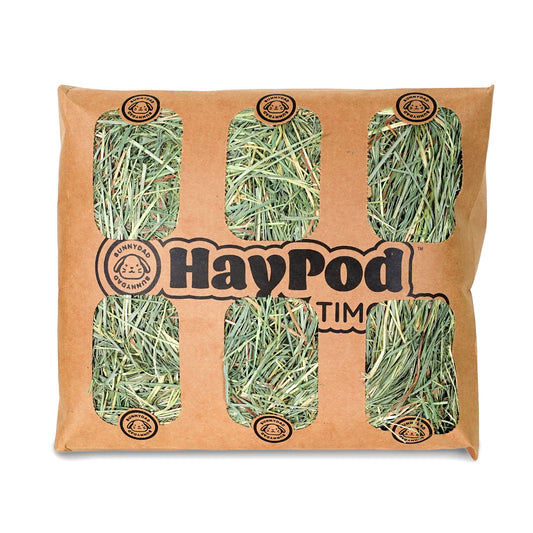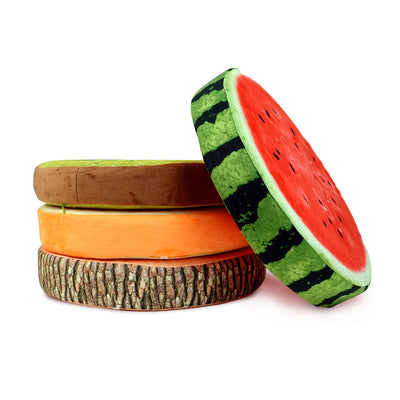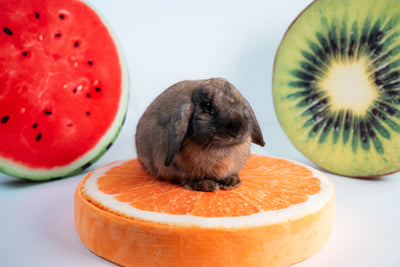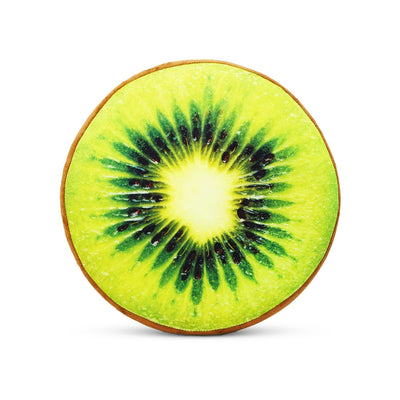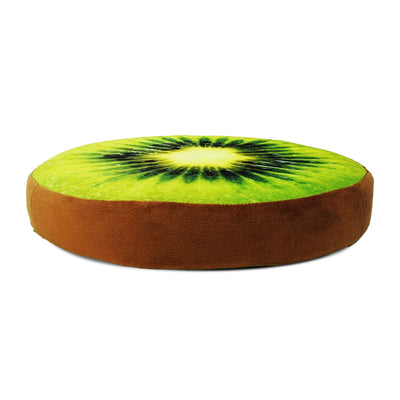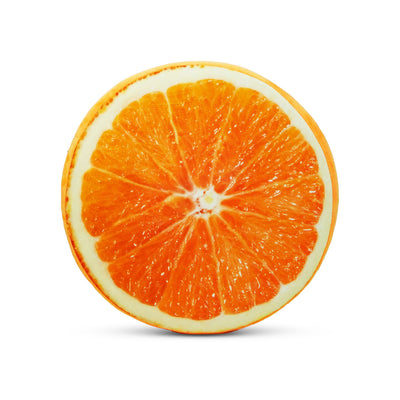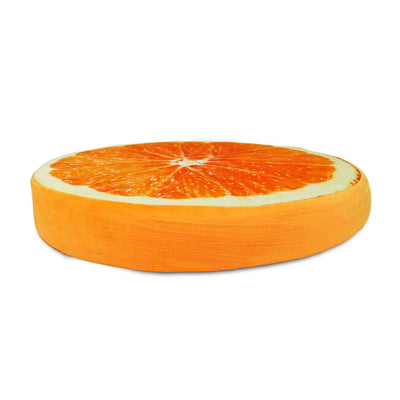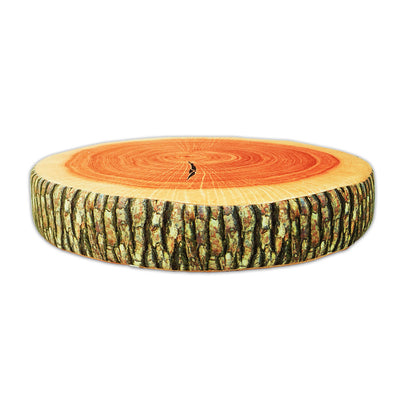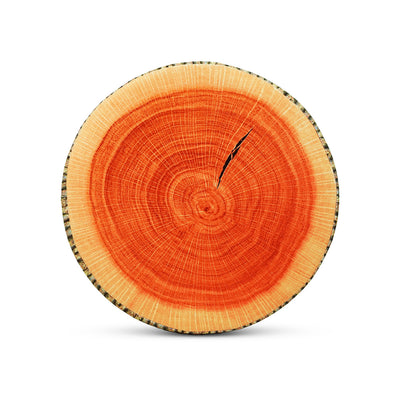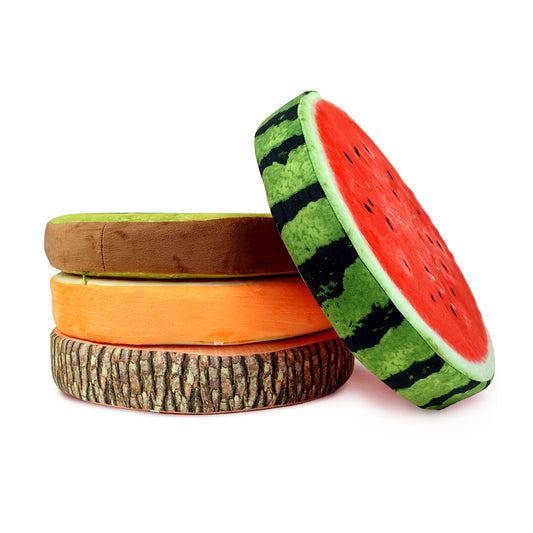Key Takeaways
- Healthy rabbit urine varies in color – Normal shades range from pale yellow to deep orange, depending on diet and hydration.
- Red or brown urine isn’t always bad – Certain foods can cause discoloration, but persistent changes may require a vet visit.
- Thick, chalky urine signals excess calcium – Too much calcium can lead to bladder issues, so a balanced diet is key.
- Dark or strong-smelling urine may mean dehydration – Make sure your rabbit has constant access to fresh water.
Hey there, BunnyGang!
The bond that develops between pets and their humans can be quite profound. There’s an inherent beauty when a sense of trust and understanding is able to transcend the barriers between species. The sense of responsibility we feel over those creatures who place their trust in us can distinctly affect the way we perceive ourselves and our obligations. Any experienced pet owner knows that after only a short period of time, the way that we view the basic care needs of our pets changes. We develop a familiarity, a welcomed desensitization and lack of squeamishness, and a fluency with our pets’ specific patterns and preferences. Similar to the parents of baby humans, and nurses in a hospital, the bodily fluids that once were off putting, now become windows into the health of our loved one, and fascinating topics of study.
A critical, yet often overlooked indicator of a rabbit's well-being is urinary health. Yes, you’ve reached the slightly less glamorous, but oh-so-vital side of rabbit care.
Monitoring Your Pet Rabbit's Health By Looking at Their Pee

As responsible rabbit owners, we've grown accustomed to keeping a close eye on indications of our bunnies' well-being. We know that as prey animals, rabbits are prone to stoicism in the face of moderate pains and discomfort, so as loving pet parents, we closely monitor their diets, their behavior, and, of course, their poop. In fact, as we’re constantly cleaning up after our pets, regularly monitoring their poop can become quite easy, but there's another vital aspect of their health that deserves our attention—urine. By creating a "pee chart" and regularly examining your rabbit's urine, you can gain some valuable and specific insights into their health, and spot potential issues early.
Pee Charts for Rabbits: What Your Rabbit’s Pee Can Tell You
Urine is a reflection of your rabbit's internal health. Changes in color, odor, or frequency can be early indicators of underlying issues. Keeping track of these changes can be instrumental in catching problems before they become serious. Just as a poop chart helps you understand your rabbit's digestive health, a pee chart can provide a window into their urinary tract health, hydration, and organ health.
A Pee Chart can help ensure that your rabbit receives prompt veterinary care as soon as it’s needed. Like a Poop Chart, a detailed account of your rabbit’s urinary health can also provide a shortcut for your vet in diagnosing a problem.
Below is a brief list of the various elements of your rabbit’s health you can learn about by closely monitoring different aspects of their urine:
Hydration
Liver & Kidney Function
Urinary Tract Infections
Bladder Stones
Blockages & Obstructions
And
Dietary Problems
Creating Your Pee Chart
- Choose a Recording Method: Just like with a poop chart, you can use a simple spreadsheet or a notebook to record your observations.
- Set a Schedule: Plan to check your rabbit's urine at least once a day or as often as needed. Consistency is key.
- Record the Details: For each entry on your chart, note the date, time, color, odor, and any unusual observations.
- Remember that a visually appealing chart will help encourage you to use it every day.
- Use clear headings and labels for each column, leave yourself enough space for notes, and write cleanly and legibly within the margins.
Ensuring that your chart is easy to read will help you when referring back to notes from previous days. This will also make it easier for others to read, in case you ever need to show the chart to your pet’s veterinarian.
Ultimately, you can set up your rabbit’s Pee Chart however it makes most sense to you. Just be sure to include the time and date of each entry, along with any relevant notes.
Here’s an example of the type of information your Pee Chart could comprise:
--------------------------------------------------------------------------------------
| Date | Time | Urine Color | Urine Odor | Notes/Concerns |
--------------------------------------------------------------------------------------
| Date | Time | Urine Color | Urine Odor | Notes/Concerns |
--------------------------------------------------------------------------------------
| Date | Time | Urine Color | Urine Odor | Notes/Concerns |
--------------------------------------------------------------------------------------
| Date | Time | Urine Color | Urine Odor | Notes/Concerns |
--------------------------------------------------------------------------------------
| Date | Time | Urine Color | Urine Odor | Notes/Concerns |
--------------------------------------------------------------------------------------
| Date | Time | Urine Color | Urine Odor | Notes/Concerns |
--------------------------------------------------------------------------------------
Instructions:
- Date: Record the date when you observed your rabbit's urine.
- Time: Note the time of day when you made the observation.
- Urine Color: Describe the color of your rabbit's urine. Use terms like "light yellow," "amber," or specify if there's an unusual color.
- Urine Odor: Describe the odor of the urine. Use terms like "mild," "sweet," or specify if there's a strong or foul odor.
- Additional Notes/Concerns: Use this section to jot down any additional observations or concerns you may have regarding your rabbit's urine. For example, note if you observe any changes in frequency or if you notice blood or other unusual features.
Interpreting Your Pee Chart

Remember that rabbit urine can change slightly based on diet, hydration, and other factors. It's essential to know what's "normal" for your specific rabbit.
Consult Your Veterinarian: If you notice consistent changes in urine color, odor, or frequency, consult your veterinarian. They can help determine whether further investigation or treatment is necessary.
Here’s what to look for as you conduct your own daily analyses:
Urine Color
A healthy rabbit’s urine is typically light yellow to amber in color (similar to human urine). This color indicates proper hydration and kidney function.
Concerning Signs:
- Dark Yellow or Concentrated: Dehydration or insufficient water intake.
- Red or Brown: Blood in the urine (hematuria), which could be a sign of a urinary tract infection, bladder stones, or other issues. Immediate veterinary attention is necessary.
- Orange: Possible liver or kidney issues.
Urine Odor
Healthy rabbit urine has a mild, slightly sweet odor.
Concerning Signs:
- Strong or Foul Odor: This can indicate an infection, urinary tract issue, or dietary problems.
Urine Frequency
Healthy rabbits’ urine output can vary, but it's essential to know what’s normal for your rabbit. All rabbits should be urinating multiple times a day.
Concerning Signs:
- Frequent urination may indicate a urinary tract infection or other bladder issues.
- Infrequent urination may indicate dehydration, or a blockage of the urinary tract.
- Straining to urinate or apparent discomfort while urinating is often a sign of bladder stones or a blockage, and should be brought to the attention of a vet if it happens more than once in the same day.
Cloudiness or Sediment
Normal rabbit urine can appear slightly cloudy at times due to diet or variations in hydration.
Concerning Signs:
- Consistent cloudiness or sediment may indicate the presence of crystals or other substances in the urine, potentially related to urinary tract issues.
Changes in Urine Behavior
Most rabbits develop consistent schedules and patterns of urination.
Concerning Signs:
- Inappropriate Urination: If your rabbit suddenly starts urinating outside of their litter box, it can indicate stress, pain, or urinary issues.
- Straining or Vocalization: If your rabbit vocalizes or appears to be in pain while urinating, seek immediate veterinary attention.
Blood in Urine
There should be no visible blood in your rabbit's urine.
Concerning Signs:
- Hematuria (Blood in Urine) is a significant concern and can indicate urinary tract infections, bladder issues, or even kidney problems. Immediate veterinary care is crucial.
Urinary Sludge or Thickened Urine
A healthy rabbit’s urine may appear slightly thicker due to diet or hydration changes, but should return to normal with diet & hydration regularity.
Concerning Signs:
- Consistent Sludge or Thickened Urine: This can be a sign of bladder sludge, which may lead to bladder stone formation. Veterinary evaluation is necessary.
Remember that your rabbit's urine can vary slightly depending on factors like diet and hydration, so it's crucial to know what's normal for your specific rabbit. Regularly monitoring their urine and promptly addressing any concerning changes can contribute to their overall health and well-being. If you ever notice significant changes or concerning signs, consult your veterinarian for a thorough evaluation and guidance on appropriate treatment.
What to Look for When Monitoring Your Rabbit’s Pee
- Color: Normal rabbit urine should be light yellow to amber in color. Any sudden change to a dark, concentrated hue or unusual colors like red or brown could signal problems.
- Odor: Healthy rabbit urine has a mild, slightly sweet odor. Strong, foul odors may indicate urinary tract issues or diet-related problems.
- Frequency: A rabbit's urine output can vary, but changes in frequency, like frequent urination or signs of straining, may be a sign of urinary problems.
Tips for Maintaining Good Urinary Health for Rabbits
- Proper Diet: Ensure your rabbit has a balanced diet rich in fresh hay, fresh vegetables, and clean water.
- Clean Environment: Keep your rabbit's living area clean and dry to prevent urinary issues.
- Stay Hydrated: Ensure your rabbit has access to clean, fresh water at all times.
Incorporating a "pee chart" into your rabbit care routine can be an invaluable tool for maintaining your furry friend's health. Just like with a poop chart, this simple practice allows you to detect potential issues early, ensuring prompt veterinary care and a happier, healthier life for your beloved rabbit.
For more information on rabbit care and health, explore our GuineaDad blogs and other reliable online resources.
Have questions or concerns about your rabbit's health? Don't hesitate to reach out to your veterinarian for guidance and assistance.
By regularly monitoring their urine and staying attuned to any changes, you're taking proactive steps to ensure your rabbit enjoys a long, happy, and healthy life.
We hope this helps you keep your pets happy and healthy, and we’ll see you next time, BunnyGang!
~BunnyDad

